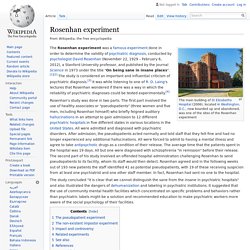

The new "dirty dozen" list of produce on Shine. By Sarah B.

Weir More from Green Picks blog (Photo: Getty Images)A new report published by the Environmental Working Group (EWG) might make you re-think that "apple a day" -- if it's conventionally grown using pesticides. According to the group's annual "dirty dozen" list of fruits and vegetables with the highest pesticide residues, apples ranked number one as the most-contaminated item, up from number four last year.
Other changes from the 2010 findings: this year, cherries dropped off the list, and lettuce, previously absent, now appears at number 11. The EWG uses data compiled by the USDA to produce these findings. Dirty Dozen 2011 Apples Celery Strawberries Peaches Spinach Nectarines (imported) Grapes (imported) Sweet bell peppers Potatoes Blueberries (domestic) Lettuce Kale/collard greens The "clean fifteen" are also included in the report - these are fruits and veggies with the lowest levels of pesticides so there's no need to waste your money on organic versions. What can 28,000 rubber duckies lost at sea teach us about our oceans?
In 1992, a shipping crate containing 28,000 plastic bath toys was lost at sea when it fell overboard on its way from Hong Kong to the United States.

No one at the time could have guessed that those same bath toys would still be floating the world's oceans nearly 20 years later. Today that flotilla of plastic ducks are being hailed for revolutionizing our understanding of ocean currents, as well as for teaching us a thing or two about plastic pollution in the process, according to the Independent. Since that fabled day in 1992 when they were unceremoniously abandoned at sea, the yellow ducks have bobbed halfway around the world. Some have washed up on the shores of Hawaii, Alaska, South America, Australia and the Pacific Northwest; others have been found frozen in Arctic ice.
Still others have somehow made their way as far as Scotland and Newfoundland, in the Atlantic. Rosenhan experiment. Rosenhan's study was done in two parts.

The first part involved the use of healthy associates or "pseudopatients" (three women and five men, including Rosenhan himself) who briefly feigned auditory hallucinations in an attempt to gain admission to 12 different psychiatric hospitals in five different states in various locations in the United States. All were admitted and diagnosed with psychiatric disorders. After admission, the pseudopatients acted normally and told staff that they felt fine and had no longer experienced any additional hallucinations. All were forced to admit to having a mental illness and agree to take antipsychotic drugs as a condition of their release. The average time that the patients spent in the hospital was 19 days. The study concluded "it is clear that we cannot distinguish the sane from the insane in psychiatric hospitals" and also illustrated the dangers of dehumanization and labeling in psychiatric institutions. The pseudopatient experiment[edit] Notes.
Optical Illusions. Saudade. Saudade (European Portuguese: [sɐwˈðaðɨ], Brazilian Portuguese: [sawˈdadi] or [sawˈdadʒi], Galician: [sawˈðaðe]; plural saudades)[1] is a Portuguese and Galician word that has no direct translation in English.

It describes a deep emotional state of nostalgic or profound melancholic longing for an absent something or someone that one loves. Moreover, it often carries a repressed knowledge that the object of longing may never return.[2] A stronger form of saudade may be felt towards people and things whose whereabouts are unknown, such as a lost lover, or a family member who has gone missing. Saudade was once described as "the love that remains" after someone is gone. Saudade is the recollection of feelings, experiences, places or events that once brought excitement, pleasure, well-being, which now triggers the senses and makes one live again.
In Brazil, the day of Saudade is officially celebrated on 30 January.[3][4] History[edit] Origins[edit] Definition[edit] Elements[edit] Music[edit] 10 Ways Our Minds Warp Time. How time perception is warped by life-threatening situations, eye movements, tiredness, hypnosis, age, the emotions and more… The mind does funny things to our experience of time.

Just ask French cave expert Michel Siffre. In 1962 Siffre went to live in a cave that was completely isolated from mechanical clocks and natural light. He soon began to experience a huge change in his perception of time. When he tried to measure out two minutes by counting up to 120 at one-second intervals, it took him 5 minutes. But you don’t have to hide out in a cave for a couple of months to warp time, it happens to us all the time. 1. People often report that time seems to slow down in life-threatening situations, like skydiving. But are we really processing more information in these seconds when time seems to stretch?
To test this, Stetson et al. (2007) had people staring at a special chronometer while free-falling 50 metres into a net. 2. 3. 4. 5. 6. 7. 8. 9. 10. Time is relative “Time is an illusion.